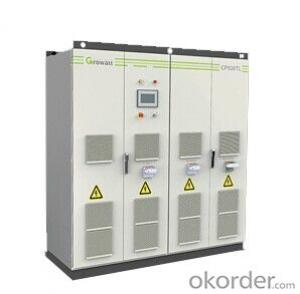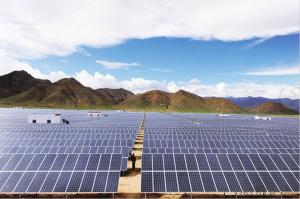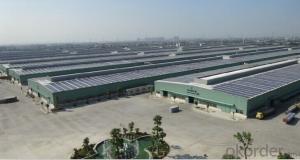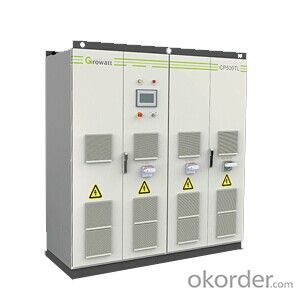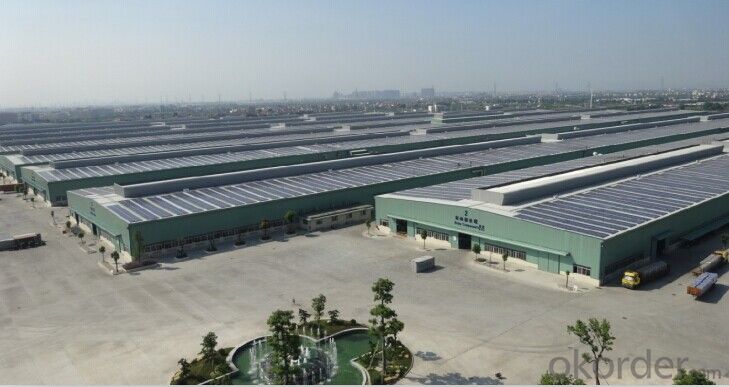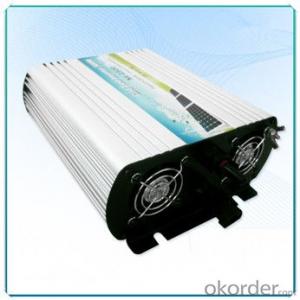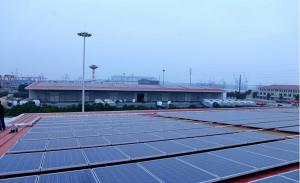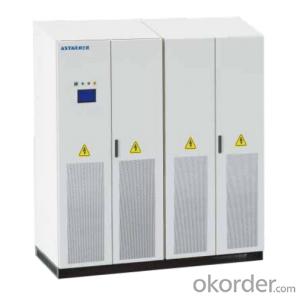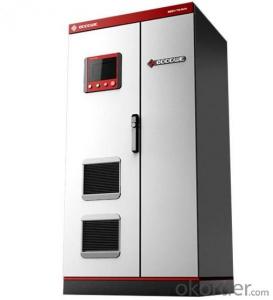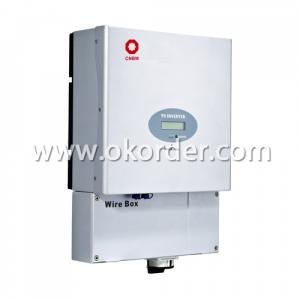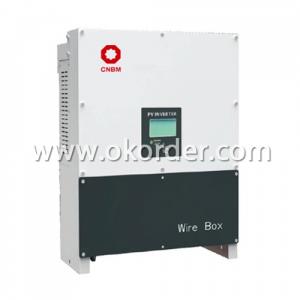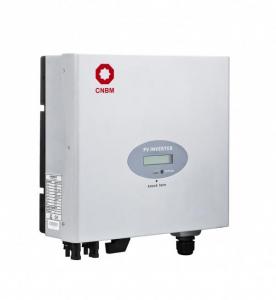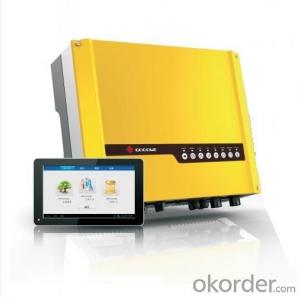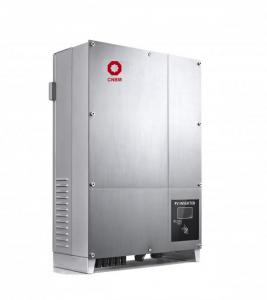50kW Solar Inverter CP500TL, 500kW for Solar Plant
- Loading Port:
- Shekou
- Payment Terms:
- TT OR LC
- Min Order Qty:
- 8 watt
- Supply Capability:
- 10000 watt/month
OKorder Service Pledge
OKorder Financial Service
You Might Also Like
Solar inverter CP500TL, 500kw for Solar Plant
Specifications
Low voltage ride through
Active power continuous adjustment (0-100%)
Reactive power adjustable, PF range 0.9lagging aa 0.9lead
Low voltage ride through
Active power continuous adjustment (0-100%)
Reactive power adjustable, PF range 0.9lagging – 0.9leading
Maximum conversion efficiency of 98.6%
Multi-language touch panel monitoring interface
Rigorous grid environment adaptable
Auxiliary electrical heating (optional)
High altitude application adaptable<6000m (power derating over 3000m)
Certificates and approvals including CE,CGC solar,BDEW etc.
Input Data (DC)
Max. DC power | 575KW |
Max. DC voltage | 1000V |
Full-load MPP-Voltage range | 450V – 820V |
Nominal input voltage | 500V |
Initial voltage/Initial power | 500V/5000W |
Max. input current | 1270A |
Number of MPP trackers | 1 |
Max. number of parallel strings | 16 |
Output Data (AC)
Nominal AC output power | 500KV |
Nominal AC output voltage | 270V |
AC output voltage range | 243V – 297V |
Nominal AC output frequency | 50Hz/60Hz |
AC output frequency range | 45Hz – 55Hz/55Hz – 65Hz |
Max. output current | 1200A |
PF (cosφ) | 0.9lagging – 0.9leading |
THDI | <3%(@pac,r)< p=""> |
Efficiency
Max. conversion efficiency | 98.6% |
Euro-eta | 98.3% |
MPPT efficiency | 99.9% |
Protection
DC disconnection device | yes |
AC disconnection device | yes |
DC Over-voltage protection | Arrester typeⅡ |
AC Over-voltage protection | Arrester typeⅡ |
Grid monitoring/regulation | yes/yes |
PV Isolation detection | yes |
General Data
Dimension (W/H/D) | 2000/2200/850 mm |
Weight | 2000kg |
Operating temperature range | -20°C … +50°C |
Humidity | 15% - 95% |
Protection level | IP20 |
Noise emission | 65dB(A)@1m |
Altitude | 3000m |
Standby power consumption | <100w< p=""> |
Cooling Concept | Forced Air Cooling |
Topology | Transformerless |
Display | LCD Touch Panel |
Communication interface | RS 485/ Ethernet |
Certificate & Approval
Approval | CE/CQC/TUV/BDEW |
- Q: How is the efficiency of a solar inverter measured?
- The efficiency of a solar inverter is typically measured by comparing the amount of direct current (DC) power produced by the solar panels to the alternating current (AC) power delivered by the inverter. This measurement is known as the inverter efficiency and is expressed as a percentage. The higher the efficiency, the more effectively the inverter converts DC power into usable AC power, resulting in greater overall energy production from the solar system.
- Q: Can a solar inverter be used in harsh weather conditions?
- Yes, solar inverters are designed to withstand harsh weather conditions such as extreme temperatures, humidity, and even rain. They are typically built with protective enclosures and advanced technology to ensure reliable operation and optimal performance in challenging environmental conditions.
- Q: Can a solar inverter be used in three-phase systems?
- Yes, a solar inverter can be used in three-phase systems. Three-phase systems are commonly used in industrial and commercial applications, and solar inverters are available in both single-phase and three-phase configurations to accommodate these systems. The three-phase solar inverter converts the direct current (DC) generated by the solar panels into alternating current (AC) that is compatible with the three-phase power grid.
- Q: Do I need a special inverter for a battery storage system?
- Yes, a special inverter is required for a battery storage system. Unlike traditional solar inverters that convert DC power from solar panels into AC power for immediate use or for feeding back into the grid, a battery storage system inverter is designed to manage the charging and discharging of the batteries. It ensures that the stored energy is used efficiently and safely, and allows for backup power during grid outages.
- Q: How does a solar inverter convert DC to AC power?
- A solar inverter converts direct current (DC) power generated by solar panels into alternating current (AC) power that can be used to power appliances and feed into the electrical grid. It does this through a two-step process. Firstly, the DC power from the solar panels is converted into a high-frequency AC signal using power electronics. Then, this AC signal is transformed into the desired AC output voltage and frequency using pulse width modulation techniques. This allows for efficient and reliable conversion of solar energy into usable electricity.
- Q: Can a solar inverter be used with a solar-powered telecommunications system?
- Yes, a solar inverter can be used with a solar-powered telecommunications system. A solar inverter is essential in converting the direct current (DC) generated by solar panels into alternating current (AC) required for powering telecommunication equipment. This ensures efficient and reliable operation of the system by enabling the utilization of solar energy to power the telecommunications infrastructure.
- Q: What is the role of a solar inverter in voltage control?
- The role of a solar inverter in voltage control is to convert the direct current (DC) produced by solar panels into alternating current (AC) that is suitable for use in homes and businesses. Additionally, a solar inverter helps regulate and stabilize the voltage levels to ensure that the generated electricity matches the required voltage for the connected electrical appliances. This helps prevent overvoltage or undervoltage situations, ensuring a safe and efficient energy supply.
- Q: What are the potential risks of overcharging a battery connected to a solar inverter?
- Overcharging a battery connected to a solar inverter can lead to several potential risks. Firstly, it can cause excessive heat buildup in the battery, which can lead to reduced battery life and even damage the internal components. Secondly, overcharging can cause electrolyte leakage or gas buildup within the battery, increasing the risk of explosion or fire hazard. Additionally, overcharging can result in the release of toxic gases, such as hydrogen, which can be harmful if not properly ventilated. Finally, overcharging can also have an adverse effect on the overall efficiency of the solar system, as excess energy is wasted during the charging process.
- Q: What is the difference between a grid-connected inverter and an off-grid inverter? What are the advantages of a hybrid inverter?
- Grid-connected inverter does not need energy storage, but the energy can not be controlled, how much light to send online to the number of online, simply do not want people to the grid does not like.
- Q: Can a solar inverter be used with a grid-interactive system?
- Yes, a solar inverter can be used with a grid-interactive system. A grid-interactive system allows for the solar inverter to convert the DC power generated by the solar panels into AC power that can be used to power the home or business. It also allows for excess power to be fed back into the grid, thus reducing energy costs and providing additional benefits such as net metering.
Send your message to us
50kW Solar Inverter CP500TL, 500kW for Solar Plant
- Loading Port:
- Shekou
- Payment Terms:
- TT OR LC
- Min Order Qty:
- 8 watt
- Supply Capability:
- 10000 watt/month
OKorder Service Pledge
OKorder Financial Service
Similar products
Hot products
Hot Searches
Related keywords
